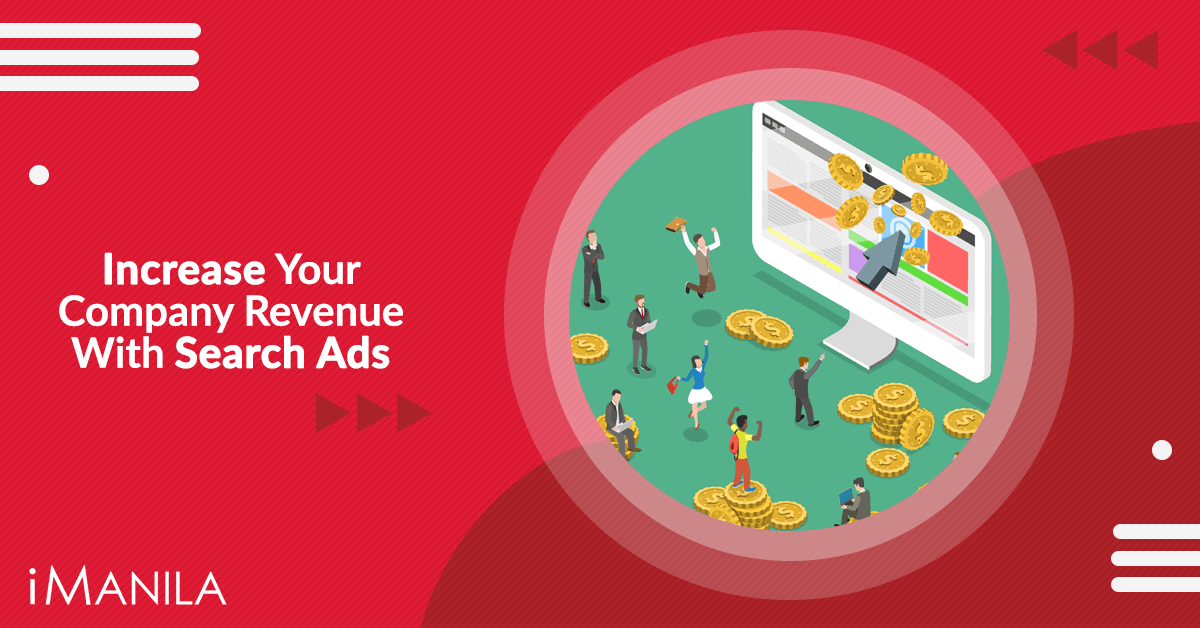You may have heard of the buzz about Google Ads, particularly Google Search Ads in helping a business drive growth. If you haven’t heard, going into the digital advertisement realm may sound daunting.
Here we will break down this claim, can you really increase your company’s revenue with Search Ads?
What are Google Ads?
To set things straight, it is important to know first the basics. Google Ads is actually an umbrella that comprises three ad networks namely: The Google Search Network, the Google Display Network, and the YouTube Network. Clicking any of those will bring you to the seller’s landing page which is any page where they hope you will ‘convert’ and buy their products.
The search network is the most popular network on Google for advertising. This deals with user intent as people usually go on Google to search for something they already have in mind. Your goal here is lead people to convert instead of just raising brand awareness.
It is here that the term Pay-per-Click comes in because you pay for each click that you get from the searchers. The concept of Cost-per-click or more known as CPC is used which is the average that you will pay for clicks. These vary per industry and usually have different benchmarks. Why is CPC important? That is because keywords on the search network are based on the price during bidding. You can set limits to how much you are going to spend and that will determine what keywords you can bid in.
The goal for the search network is to have your ad rank in the first page ideally. This is determined by ad rank which is made up of a variety of factors that include bid amount, quality score, and more. Given this, bidding higher or having a better quality score can greatly influence your ranking on the Google Search Engine Results Page.
What Numbers Say
While it may be difficult to make a decision to jump on the Google Ad train, a lot of other businesses have made it work on their favor. Statistics show that 88% of consumers use the Internet to find a local business and that 29% of consumers search for local businesses at least every week. This shows a huge potential to tap into the market actively using the Google Search platform as your future customers.
Why is the search network the best strategy instead of Search Engine Optimization? Well 89% of the traffic generated by search ads cannot be replaced by organic clicks when the ads are paused. For high commercial intent queries on search, the top three ad spots take about 40% of the clicks on the page. On top of that, 98% of searchers choose a business that is on the first page of the results they get, which shows the importance of not just being able to be part of the search network but also ranking on the top.
Do they work?
Once properly set up and managed, you can find a strong return on investment by using Google Ads. Businesses in fact, can make an average of $2 in revenue for every $1 they spend on Google Ads. For the businesses already using Google Ads, 72% of them plan to increase their PPC budgets which is another indicator that they are seeing good ROI. As for the mobile users, 70% of mobile searches call a business directly from Google Search.
While they are a multitude of other factors that leads to the success of a Google Ads campaign, its success still greatly depends on how its set up and managed. This is why it’s vital to have a great team to work on such a campaign. If you do not have a team that can do such, fear not for you can always leave it to the experts to manage your campaigns for you. Let a Google Partner agency like iManila be your partner in running your Google Search campaign. With many years of experience in the industry, you can count on us to deliver and give you an impactful campaign. Feel free to drop a message at [email protected] and see where we can help you!










